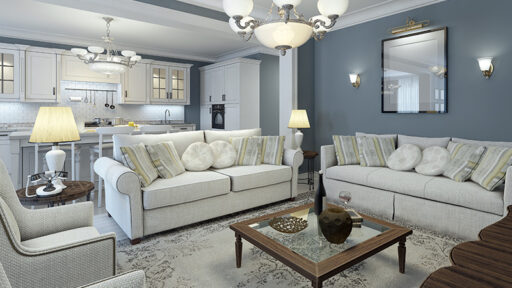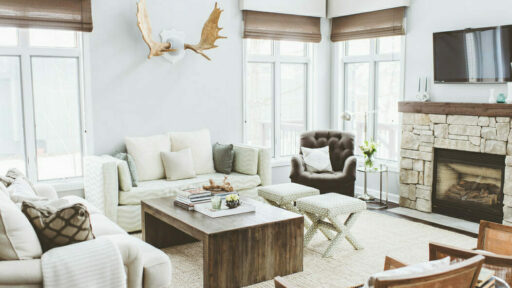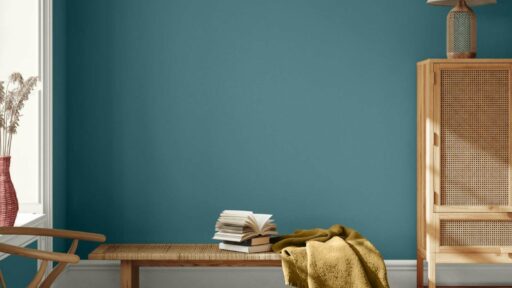The majority of people ignore walls when they want to decorate their rooms. People tend to stick with standard wall decoration choices, which include paint, wallpaper, framed prints, and occasionally a mirror for more adventurous designs. Your walls possess the ability to create a complete transformation of your space, which extends past basic color schemes and flat images. The current interior design movement emphasizes creating spaces with rich layers and textured elements that add depth to rooms. Walls should serve as more than background elements because they present an opportunity to develop an immersive design experience.
Your interior space needs dimensional elements to achieve complete character and finish. The addition of three-dimensional wall elements creates spaces that become multi-layered and expressive while gaining unexpected personal touches. The following section demonstrates how to move beyond two-dimensional frames to create dynamic wall decorations that bring your space to life.
Flat Décor No Longer Satisfies Modern Design Requirements
The time of framed artwork and gallery walls has passed, but they continue to maintain their worth. Homeowners now seek interior design elements that provide sensory engagement in addition to visual appeal, as modern design trends increasingly emphasize experiential spaces. Flat decorative elements fail to deliver the immersive experience that people seek in their interior spaces.
The combination of texture and light effects, along with shadows, creates depth that flat artwork and paint cannot achieve. The interior design industry is showing an increasing interest in natural elements, organic shapes, and sculptural furniture, as people seek to add depth to their spaces. The goal extends beyond basic wall decoration, as you need to install artwork that creates a powerful visual impact and generates complex visual interest.
One way to achieve this is by incorporating thoughtfully designed sculpture wall decor. These pieces do more than fill a wall; they introduce dimension, texture, and artistry that traditional two-dimensional décor cannot provide.
The popularity of three-dimensional wall decorations continues to grow in interior design spaces.
Three-dimensional wall art has emerged as a leading interior design trend because it creates visually striking installations. Three-dimensional wall art surpasses traditional framed prints through its use of metal installations and ceramic arrangements, which create more engaging visual experiences.
These decorative elements create physical sensations when people touch them in interior spaces. The objects produce interesting shadows when sunlight enters the space, and they produce different lighting effects when illuminated by lamps or sconces. The unique feature of these elements enables them to unite artistic elements with architectural elements, which turns your walls into functional barriers.
Designers incorporate sculptural accents to establish a sense of room stability while making a statement through design elements that replace large furniture pieces and incorporate vibrant colors. These decorative elements work best in minimalist rooms because they focus on creating balanced spaces with atmospheric effects.
Practical Ways to Use Dimensional Décor
The implementation of depth elements in walls depends on your financial resources, design preferences, and comfort level with unconventional choices.
Sculptural pieces should be placed in areas that will create the most potent visual effect, such as above sofas, behind dining tables, and in entryways.
The combination of woven wall hangings, wood carvings, and ceramic panels, alongside traditional prints, produces a carefully arranged, multi-textured design.
People who enjoy creating things by hand can craft their own textured wall panels using reclaimed wood, plaster, and papier-mâché materials. These affordable alternatives produce personalized decorative results.
Small rooms benefit from multiple compact dimensional elements instead of using one large installation. The arrangement prevents the room from becoming overwhelmed.
Where Sculpture Meets Style
Homeowners today choose elegant sculptural pieces that add artistic value to their spaces while remaining accessible to all budgets. Homeowners also choose decorative items that combine artistic value with accessible designs, which work well in any home environment.
These decorative elements bring sophisticated touches to any room through their refined yet robust design. The selection of designs should complement your personal style while preserving the natural flow of your interior space.
Styling Tips for a Personal Touch
Sculptural wall pieces provide designers with complete freedom to incorporate them into any design application. The way you execute your design decisions determines their success. The following methods help you achieve both style and intention in your wall design:
- When you have a strong sculptural wall piece, you should choose basic elements for the surrounding area. The artwork becomes the primary focus when you use neutral colors and basic furniture designs.
- Lighting direction creates depth by making objects appear more dimensional. The use of sconces, spotlights, and candles will help you create depth by revealing the textures and contours of your wall sculptures.
- Wall sculptures create a natural and calming atmosphere when paired with plants and organic elements. The combination works best in spaces that follow biophilic or Japandi design principles.
- A sculptural wall piece becomes more visually appealing when surrounded by matching objects, such as shelving units, small picture frames, and console tables.
- You should change your wall decorations both in terms of placement and selection during different seasons. Your space will appear fresh and expressive when you update your décor in accordance with the current season.
Why Dimensional Décor Matters
Interior design serves two primary purposes: it creates both visual appeal and physical interaction with space. Sculptural decorations offer more than just visual appeal, as they allow people to touch and explore them. The combination of visual appeal and sensory engagement creates a space that encourages more profound exploration of both visual elements and spatial sensations.
Your home becomes more purposeful and carefully arranged through the use of dimensional wall decorations. The goal of decorative design is to select specific elements that stimulate your senses, rather than creating visual overload. The “wow factor” in every room becomes achievable through the thoughtful selection of metalwork, ceramics, textiles, and mixed-media sculptural decorations.
Final Thoughts
Your walls function as empty surfaces that do not need to stay flat. The addition of sculptural wall art transforms regular rooms into extraordinary spaces that display personality and texture through their three-dimensional elements.
Sculptural décor offers endless design possibilities, as it encompasses a wide range of styles—from dramatic to subtle, from minimalist to ornate, and from traditional to contemporary. Your home’s emotional response to the décor stands as the most critical factor.
When you are about to buy another framed print, consider selecting three-dimensional decorative items instead. Test different items that add depth, texture, and individual character to your space. Your walls can become more than boundaries when you use them to tell stories, create moods, and express your personal style.








